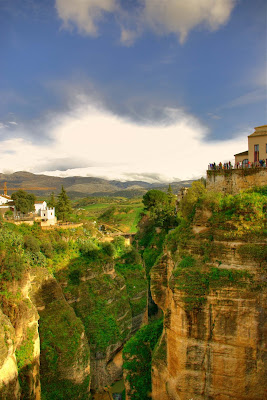Introduction:
Chichen Itza, a testament to ancient civilizations' grandeur, lies in the magnificent jungles of Mexico's Yucatn Peninsula.
Visitors from all over the world are invited to immerse themselves in the mystique of its towering pyramids, intricate sculptures, and rich historical significance by this UNESCO World Heritage site, a vast archaeological complex.
Join us on a virtual journey as we explore the wonders of Chichen Itza, a destination that seamlessly weaves together the threads of history, architecture, and cultural significance.
A look at history from a different perspective:
From the 7th to the 10th century, Chichen Itza, meaning "the mouth of the well of Itza," was a thriving city in the Maya civilization.
The buildings, which were testament to the ancient knowledge in astronomy and mathematics possessed by Maya peoples, also functioned as a ceremony center, trading hub.
The most famous pyramid in the Kukulcn:
There's a pyramid of Kukulcn, also called El Castillo, at the heart of Chichén Itza. The Iconic Building is an ancient Mayan masterpiece, and displays the perfect balance between symbolism and precision.
The play of the sun on the pyramid creates the illusion of a serpent descending, a celestial nod to the feathered serpent god, Kukulcn, during the equinoxes.
The Astronomical Observatory:
The Caracol observatory, designed with unprecedented accuracy, is another example of Chichn Itz's dedication to celestial precision.
The spiral stairway and the strategic openings, which highlight the deep connection of the Mayans to the universe, are in alignment with celestial events.
The Sacred Cenote:
A sacred site for offerings and ceremonies was the Sacred Cenote, a natural sinkhole in the city.
A treasure hoard of artifacts has been discovered by archaeologists, which gives a glimpse into the ancient Maya culture's spiritual practices.
Intricate sculptures and ball courts:
Take a tour of the site's wonderful grounds and you can find intricate carving, beautiful columns or big ball court which is the largest and most magnificent in its kind.
This ball game had ritualistic meaning, with a deeper symbolic significance that could be attributed to each match.
Preservation Efforts and UNESCO's recognition:
In 1988, the historical importance of Chichen Itza led to its designation as a UNESCO World Heritage site.
Ongoing efforts to preserve the site will make it possible for generations to admire its wonders, connected with a wide range of humanity's history.
Experience of the visitor and Cultural Immersion:
A curious traveller who would like to discover its archaeological treasures is welcome today in Chichen Itza.
The guided tour offers a historical context, while the sensory environment allows visitors to imagine how vibrant life used to be in these ancient buildings.
Exploring Surrounding Wonders:
While Chichén Itzá takes center stage, the surrounding Yucatán Peninsula has much more to offer. Take a good look at the surrounding archaeological sites such as Ek Balam and Coba, which are all of their respective distinctive charm and historic significance.
Unknowable gems like those offer a comprehensive understanding of the Mayan civilization.
Culture and cuisine of the local area:
Chichen Itza, in addition to its historical value, offers a glimpse at the culture of the indigenous Yucatn region.
Traditional Yucatecan cuisine, lively markets and a warm hospitality of the surrounding communities are also offered to visitors.
Credits:
- Photo by Filip Gielda on Unsplash
- Photo by Alex Azabache on Unsplash
Conclusion:
Chichén Itzá, known for its aweinspiring architecture and rich culture, has invited travellers to travel a journey of time.
It's hard for you to help but feel the echo of a civilization that once thrived here, as you explore the remnants of this ancient city.
Chichen Itza is more than just a tourist destination, it's an expression of the undying legacy of human achievement and boundless curiosity that inspires us to find our past mysteries. Come and be fascinated by the mystery of Chichen Itza.
























